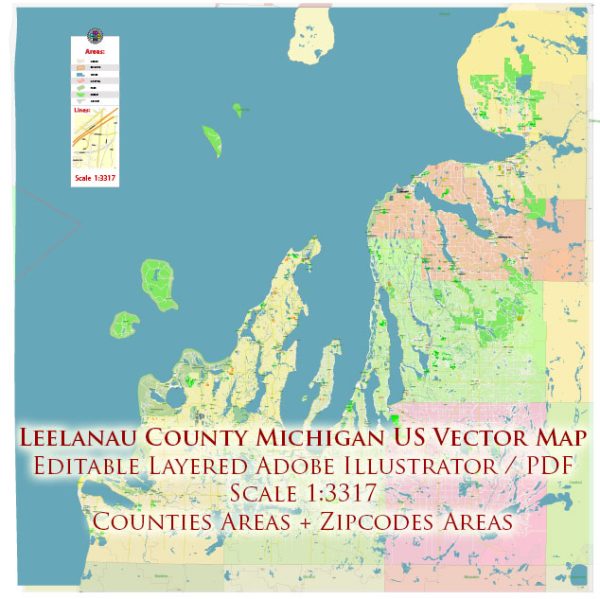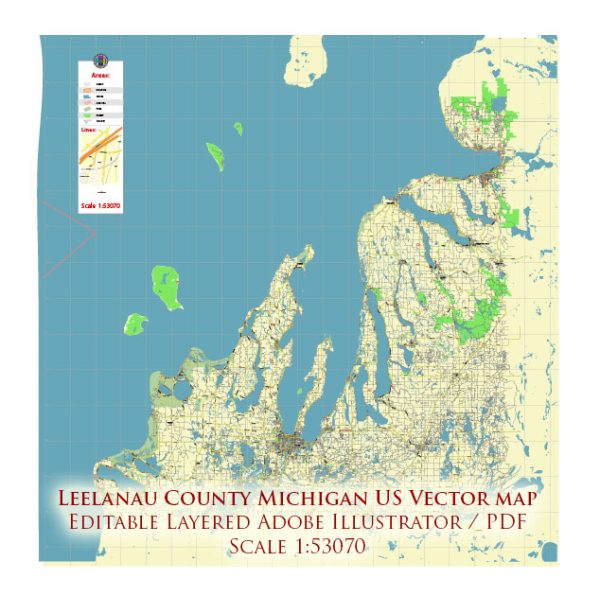Leelanau County is located in the northwestern part of Michigan’s Lower Peninsula and is known for its stunning natural beauty, including its geology. The geology of Leelanau County is characterized by its glacial history, diverse bedrock formations, and unique landscapes. Here are some key features and geological characteristics of the area:
- Glacial History: Like much of the Great Lakes region, Leelanau County’s geology has been significantly shaped by glacial activity. During the last Ice Age, glaciers covered the area, depositing layers of sediment and carving out the landscape. This glacial action left behind numerous features such as drumlins, moraines, and kettle lakes.
- Bedrock Geology: The bedrock geology of Leelanau County is primarily composed of Precambrian rocks, including granite, gneiss, and schist. These ancient rocks date back over a billion years and provide a strong foundation for the region.
- Leelanau Formation: The county gives its name to the Leelanau Formation, a geological unit that consists of various sedimentary rocks, including sandstones, shales, and limestones. These rocks were formed during the Middle Devonian period and are rich in fossils, particularly invertebrates such as brachiopods and crinoids.
- Fossil Rich: Leelanau County is known for its fossil-rich rocks, especially in the areas where the Leelanau Formation is exposed. Fossil hunters can discover a wide variety of ancient marine life preserved in these rocks, offering insights into the region’s geological history.
- Coastal Features: The county’s western boundary is along the eastern shore of Lake Michigan, and the coastline features scenic bluffs and dunes. These coastal features are a result of ongoing erosion and sediment deposition by the lake, creating a unique landscape that attracts visitors.
- Glacial Moraines: The hilly terrain of Leelanau County is dotted with glacial moraines, which are deposits of glacial till left behind by retreating glaciers. These moraines often contribute to the region’s rolling landscape and are important for agriculture.
- Kettle Lakes: Glacial activity also created numerous kettle lakes in the area. These are small, often circular lakes formed when a chunk of ice was left behind by a retreating glacier and subsequently filled with water. These kettle lakes are scattered throughout the county and contribute to its scenic beauty.
- Karst Features: Some parts of Leelanau County exhibit karst topography, characterized by sinkholes, caves, and underground drainage systems. These features are typically associated with limestone bedrock and can create unique landscape formations.
Overall, Leelanau County’s geology is a product of its glacial history, rich bedrock formations, and the ongoing forces of erosion and sedimentation. The combination of geological features and natural beauty makes it a popular destination for both outdoor enthusiasts and those interested in the Earth’s history.



 Author: Kirill Shrayber, Ph.D.
Author: Kirill Shrayber, Ph.D.